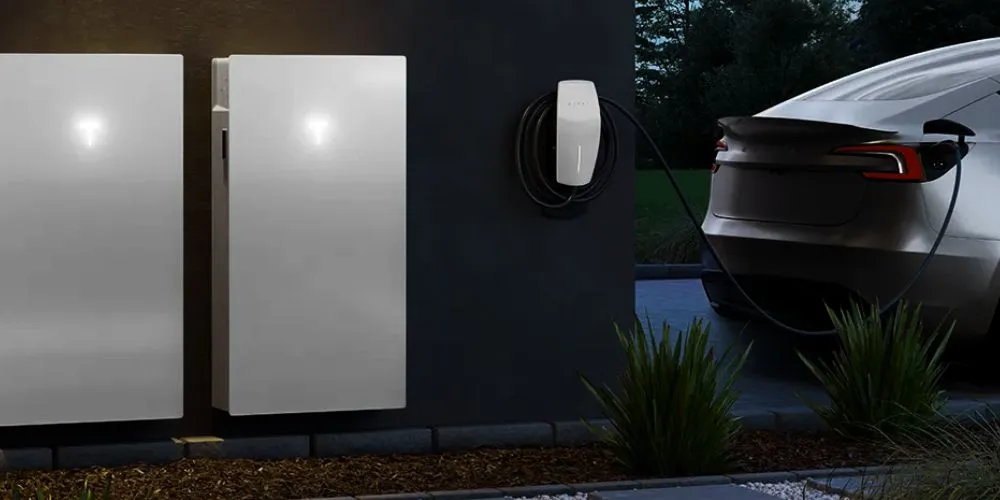The energy sector is transforming, with renewable energy sources such as solar and wind taking center stage. A key enabler of this transformation is energy storage technology, which addresses the intermittent nature of renewables. Tesla, Inc., a leader in innovation and sustainable technology, introduced the Tesla Powerwall in 2015 to accelerate the world’s transition to sustainable energy. This case study examines the Tesla Powerwall’s impact on energy storage, its technological advancements, and the broader implications for the future of energy management.
The Evolution of Energy Storage
Energy storage systems have become a cornerstone of modern renewable energy strategies, offering solutions to manage supply fluctuations and improve energy resilience. As demand for cleaner and more efficient energy solutions rises, the development of advanced storage technologies is reshaping the energy landscape.
Historical Challenges in Energy Storage
Before the advent of modern battery storage solutions, the energy grid faced numerous challenges in managing supply and demand. Traditional grids operated on a “just-in-time” model, where electricity generation had to match consumption in real-time. This model struggled to accommodate the variable output of renewable sources such as solar and wind, which depend on weather conditions.
The absence of practical storage solutions led to energy wastage during surplus production and power shortages during peak demand. These inefficiencies hindered the widespread adoption of renewables and underscored the need for reliable, scalable, and cost-effective energy storage systems. Early storage technologies, such as lead-acid batteries and pumped hydro storage, had limitations in efficiency, scalability, and environmental impact, creating a gap for innovative solutions.
Tesla’s Entry into the Market
Tesla recognized the potential of energy storage to revolutionize the energy industry and introduced the Powerwall as a game-changing solution. Designed for residential use, the Tesla Powerwall is a lithium-ion battery system that stores excess energy generated from solar panels or the grid. Its compact design, affordability, and integration with Tesla’s solar products positioned it as an attractive option for homeowners looking to reduce reliance on traditional utilities.
By leveraging advancements in lithium-ion battery technology, Tesla addressed critical pain points in energy storage, including cost, durability, and efficiency. The Powerwall allowed consumers to store energy during outages, optimize energy usage, and even participate in utility programs incentivizing demand response.
Tesla Powerwall: Innovations and Features
Tesla Powerwall has set a benchmark for residential and commercial energy storage systems. Its innovative features, seamless integration, and user-friendly design have contributed to its widespread adoption and market leadership.
Advanced Battery Technology
The Tesla Powerwall’s core is its lithium-ion battery, which uses nickel-cobalt-aluminum (NCA) chemistry. This configuration offers a high energy density, long cycle life, and improved thermal stability compared to earlier battery technologies. The Powerwall is designed to withstand thousands of charge and discharge cycles, making it a durable and reliable choice for long-term energy storage.
Tesla’s focus on improving battery performance has led to significant advancements in energy efficiency. The Powerwall boasts a round-trip efficiency of over 90%, ensuring minimal energy loss during charging and discharging. Its capacity, currently at 13.5 kWh per unit, provides sufficient backup power for critical household needs during outages or high-demand periods.
Integration with Solar Energy
One of the Powerwall’s most compelling features is its seamless integration with solar energy systems. When paired with Tesla’s Solar Roof or other photovoltaic (PV) panels, the Powerwall enables homeowners to harness solar energy daily and store excess power for nighttime use. This integration maximizes the utilization of renewable energy and reduces dependence on grid electricity.
The Tesla Powerwall also supports off-grid functionality, allowing users in remote areas or regions with unreliable grid infrastructure to achieve energy independence. Combining renewable generation with storage enables a self-sufficient energy solution that aligns with Tesla’s mission to promote sustainability.
Intelligent Energy Management
Advanced software capabilities enhance Tesla’s energy storage solutions. The Powerwall’s companion app provides real-time monitoring and control, allowing users to track energy production, consumption, and storage levels. This transparency empowers users to make informed decisions about their energy usage and optimize costs.
The Powerwall’s intelligent features include time-based control, which leverages utility rate structures to minimize energy expenses. For instance, users can charge the battery during off-peak hours when electricity rates are lower and use the stored energy during peak demand periods. This capability has proven particularly beneficial in regions with dynamic pricing models.
The Impact of Tesla Powerwall
The Tesla Powerwall has profoundly impacted the energy storage market and the broader transition to renewable energy. Its success has catalyzed innovation, expanded access to energy storage, and inspired competitive advancements in the industry.
Promoting Residential Energy Storage
The Powerwall has democratized access to energy storage, making it an attainable solution for residential customers. Its scalability allows homeowners to install multiple units to meet their energy needs. This flexibility has been a key driver of adoption, particularly in areas prone to power outages or high energy costs.
A family in California equipped their home with solar panels and a Tesla Powerwall to mitigate the impact of frequent grid outages caused by wildfires. The system provided uninterrupted power during emergencies and reduced their monthly energy bills by over 50%.
Supporting Renewable Energy Integration
The Powerwall has played a pivotal role in addressing renewable intermittency. By storing excess energy generated during peak production times, the system ensures a stable and reliable power supply even when solar or wind resources are unavailable. This capability enhances grid resilience and accelerates the integration of renewable energy sources into the mainstream energy mix.
In Australia, Tesla deployed Powerwall units as part of a virtual power plant (VPP) initiative. By aggregating the storage capacity of thousands of homes, the VPP provided grid stability and supported the local utility in managing peak demand.
Driving Market Competition and Innovation
Tesla’s success with the Powerwall has spurred competition and innovation in the energy storage market. Companies such as LG Chem, Sonnen, and Enphase have introduced their own residential storage solutions, contributing to a dynamic and rapidly evolving industry. This competition has reduced costs, improved performance, and expanded consumer choices.
A renewable energy cooperative in Germany adopted a combination of Tesla Powerwall and competitor products to offer customized energy storage solutions to its members. This approach maximized efficiency and affordability, fostering community-driven renewable energy adoption.
Challenges and Opportunities
While the Tesla Powerwall has achieved significant milestones, it faces challenges in scalability, cost, and supply chain constraints. Addressing these issues will be crucial for sustaining growth and realizing the full potential of energy storage technology.
Managing Supply Chain and Production
The increasing demand for Powerwall units has strained Tesla’s production capacity. The company’s reliance on critical raw materials such as lithium and cobalt presents challenges in maintaining a stable and sustainable supply chain. Tesla has invested in vertical integration to mitigate these risks and explored alternatives such as lithium iron phosphate (LFP) batteries.
Tesla’s Gigafactory in Nevada has become a cornerstone of its battery production strategy. By scaling manufacturing operations and sourcing materials locally, Tesla aims to reduce costs and ensure a consistent supply of Powerwall units.
Expanding Global Reach
Tesla’s expansion into international markets presents both opportunities and challenges. While emerging economies offer significant growth potential, navigating diverse regulatory environments and infrastructure limitations requires strategic adaptation.
In South Africa, Tesla partnered with local companies to promote the adoption of Powerwall systems in areas with frequent power shortages. Tesla successfully established a foothold in a challenging yet promising market by customizing solutions to meet regional needs.
The Future of Energy Storage
As the energy sector continues to evolve, the role of advanced storage technologies like the Tesla Powerwall will become increasingly critical. Innovations in battery chemistry, manufacturing, and software will shape the future of energy management and sustainability.
Advancing Battery Technology
Developing next-generation batteries with higher energy densities, faster charging capabilities, and reduced environmental impact will drive the next wave of innovation. Solid-state batteries, for instance, promise to revolutionize energy storage with improved safety and performance.
Tesla’s ongoing research into solid-state technology and its investment in battery recycling initiatives reflect its commitment to sustainable innovation and environmental stewardship.
Integrating Energy Storage with Smart Grids
Integrating energy storage with smart grids will enable more efficient energy distribution and demand management. By leveraging artificial intelligence and IoT technologies, future systems will optimize energy flows and enhance grid stability.
In Hawaii, Tesla’s Powerwall systems have been deployed to support grid modernization efforts, demonstrating the potential of storage solutions to create a more resilient and sustainable energy infrastructure.
Conclusion
The Tesla Powerwall has redefined energy storage, empowering consumers to embrace renewable energy and contribute to a sustainable future. By addressing key challenges in energy management, the Powerwall has facilitated the global transition to cleaner, more efficient power systems.
As advancements in technology and policy continue to reshape the energy landscape, Tesla’s innovative approach and commitment to sustainability will remain pivotal. The Powerwall’s success is a testament to the transformative potential of energy storage, offering a blueprint for the future of sustainable energy solutions.










